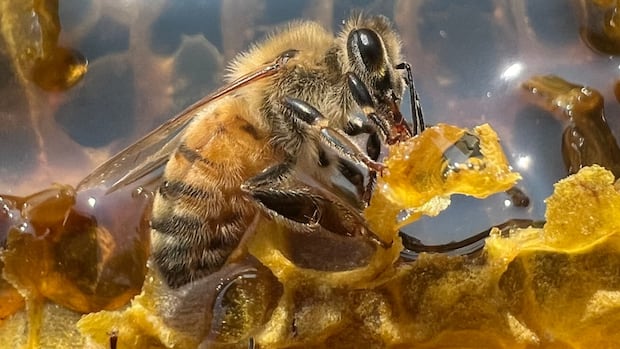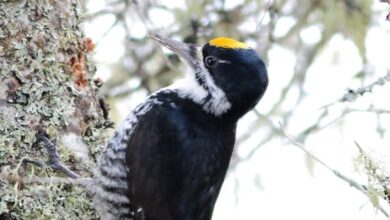NASA provides the first look at newly returned asteroid sample

NASA showed off its first asteroid samples delivered last month by a spacecraft — the most ever returned to Earth.
Scientists and space agency leaders took part in the reveal at Johnson Space Center in Houston.
The ancient black dust and chunks are from the carbon-rich asteroid named Bennu, almost 97 million kilometres away. NASA’s OSIRIS-Rex spacecraft collected the samples three years ago.
They were dropped off, sealed in a capsule, during a flyby of Earth last month.
Scientists anticipated at least a cupful of rocks, far more than the amount Japan brought back from a pair of missions years ago. The exact quantity isn’t yet known because the main sample chamber hasn’t been opened, officials said.
“It’s been going slow and meticulous,” said the mission’s lead scientist, Dante Lauretta of the University of Arizona.
Black dust and particles scattered around the outside edge of the chamber was bonus material, according to Lauretta.
“Already, this is scientific treasure,” he said.
Besides carbon, the asteroid rubble holds water in the form of water-bearing clay minerals, said NASA administrator Bill Nelson.
The landing of the return capsule capped a six-year joint mission of the U.S. space agency and the University of Arizona, as well as the Canadian Space Agency. It was only the third asteroid sample, and by far the biggest, ever returned to Earth for analysis, following two similar missions by Japan’s space agency ending in 2010 and 2020.
Like other asteroids, Bennu is a relic of the early solar system. Because its present-day chemistry and mineralogy are virtually unchanged since forming some 4.5 billion years ago, it holds clues to the origins and development of rocky planets such as Earth, and perhaps even the evolution of life.
UBC getting part of sample
The capsule and its contents were initially examined in a “clean room” at the Utah Test and Training range near the landing site. The capsule was then flown to the Johnson Space Center, where its inner canister was opened in order for samples to be parceled into smaller specimens promised to some 200 scientists in 60 laboratories around the world.
On The Coast7:11How UBC will study samples of asteroid Bennu
Researchers at the University of British Columbia’s Pacific Centre for Isotopic and Geochemical Research are expecting a sample of up to a few hundred milligrams from Bennu to arrive by the end of November.
At the time it landed, the Bennu sample was estimated to weigh about 100 to 250 grams.
Organic compounds
Samples returned in 2020 by the Japanese mission Hayabusa2 from Ryugu, another near-Earth asteroid, were found to contain two organic compounds, buttressing the hypothesis that celestial objects such as comets, asteroids and meteorites that bombarded early Earth seeded the young planet with the primordial ingredients for life.
Bennu, a small, carbon-rich body discovered in 1999, appears to be made up of a loose collection of rocks, like a rubble pile, according to scientists. It measures about 500 metres across, making it slightly wider than the Empire State Building is tall but tiny compared with the Chicxulub asteroid that struck Earth some 66 million years ago, wiping out the dinosaurs.
OSIRIS-REx launched in 2016 and reached Bennu in 2018, then spent nearly two years orbiting the asteroid before venturing close enough to snatch a sample of the loose surface material with its robotic arm on Oct. 20, 2020.
NASA is due to launch a separate mission on Thursday to a more distant asteroid called Psyche, a metal-rich body believed to be the remnant core of a protoplanet and the largest known metallic object in the solar system.




